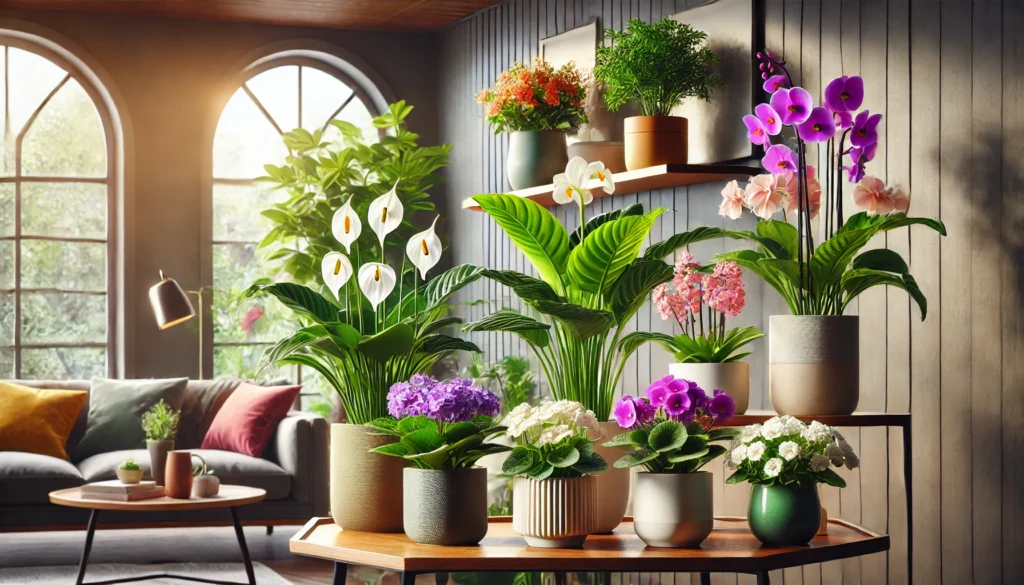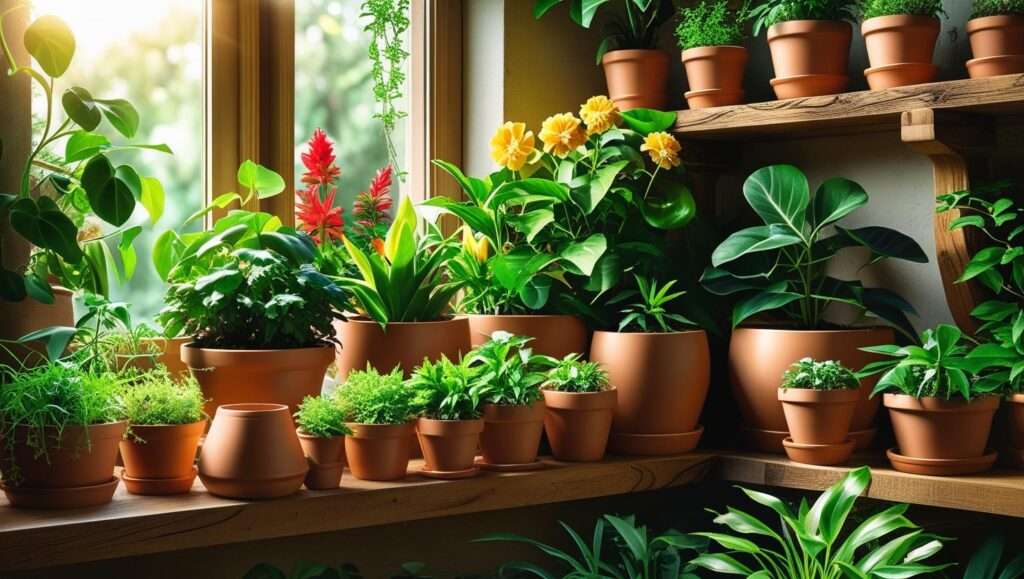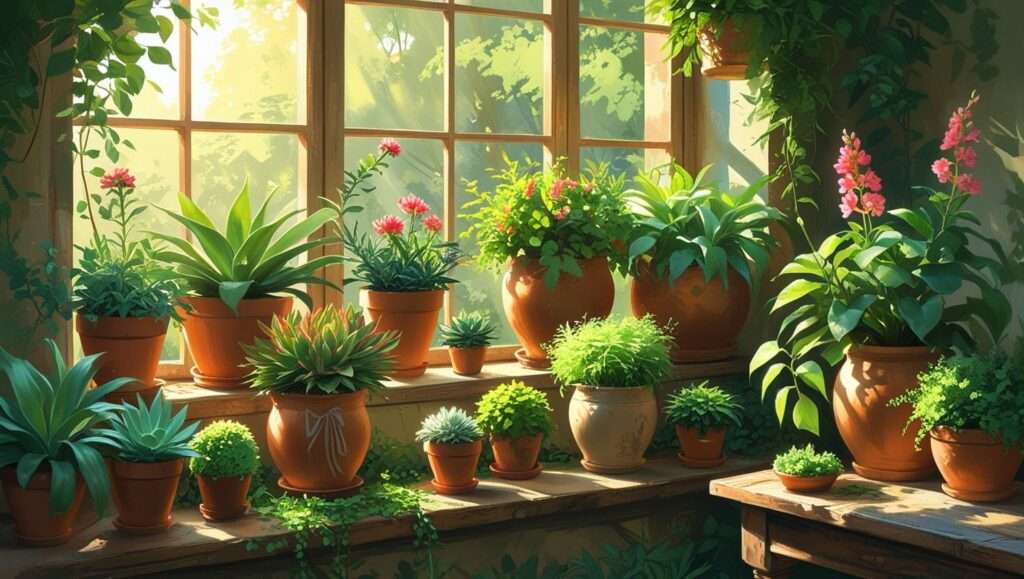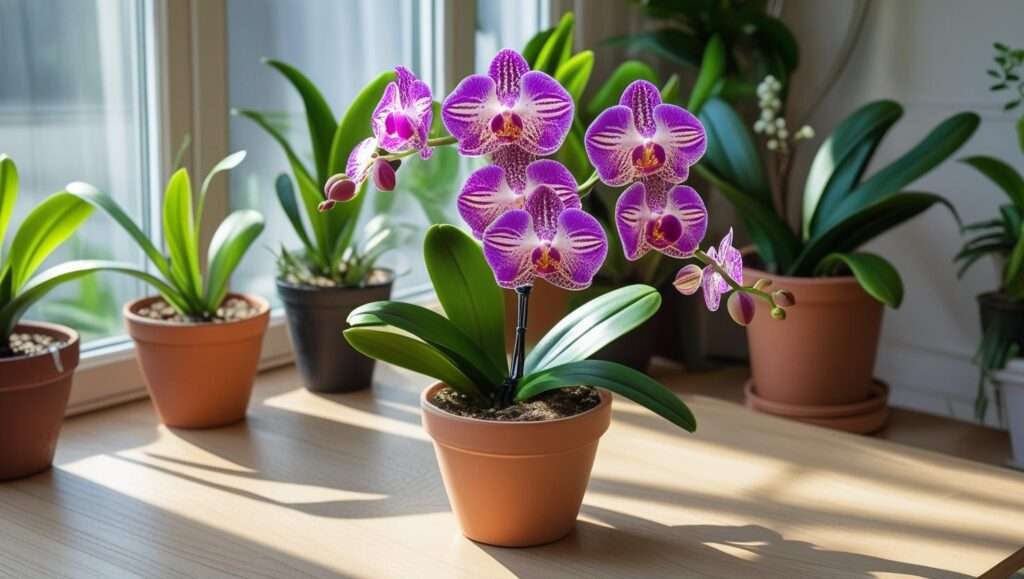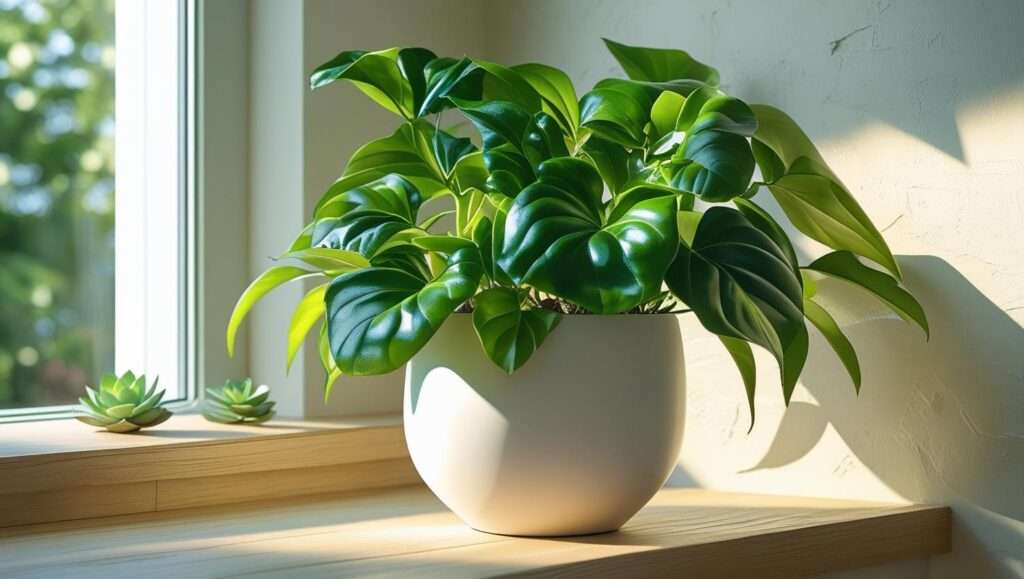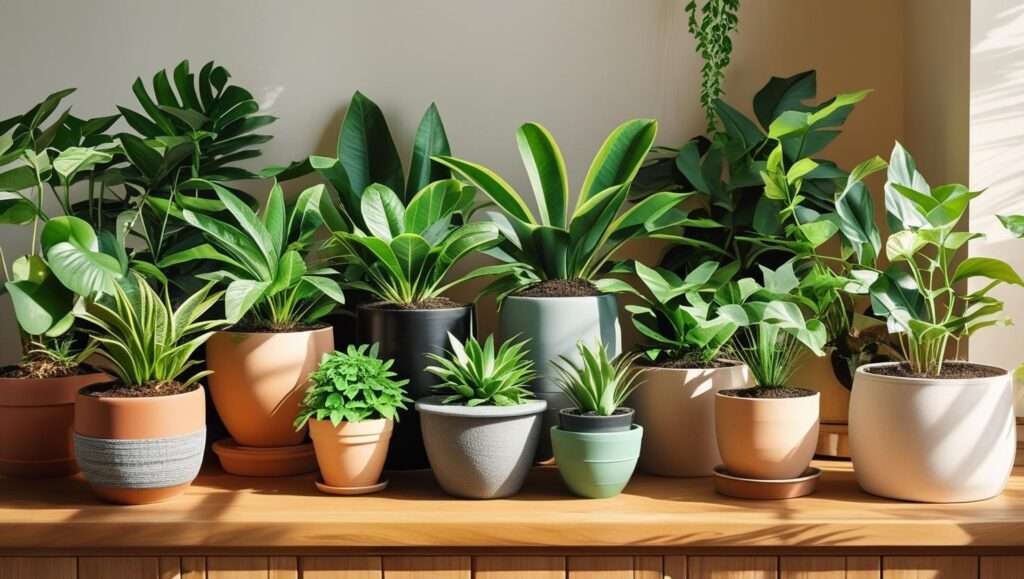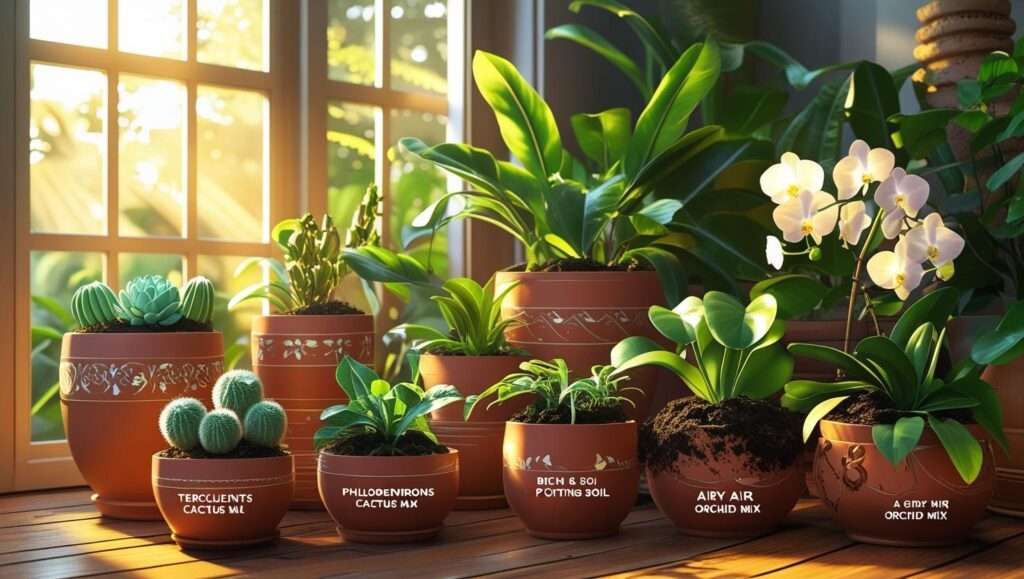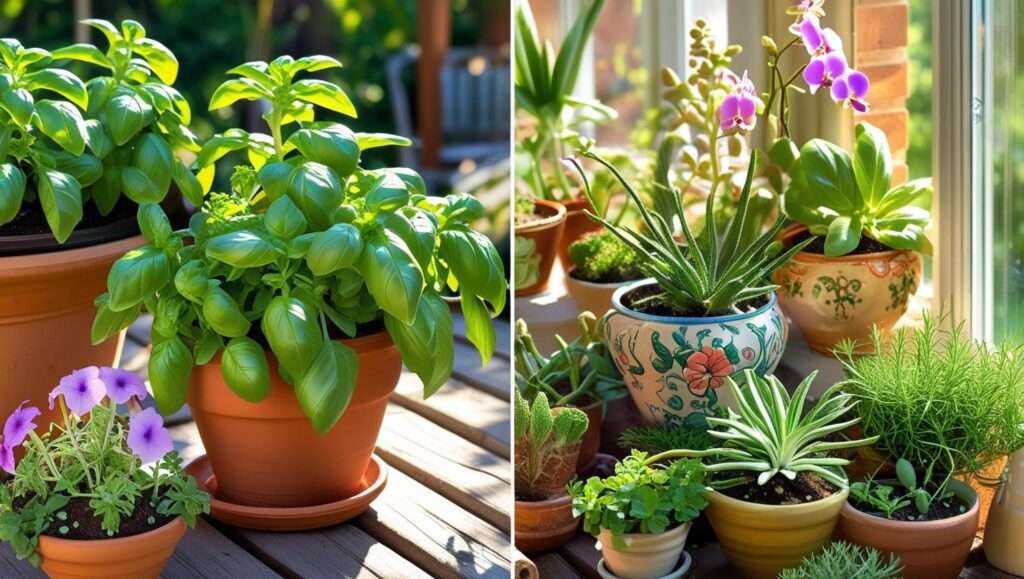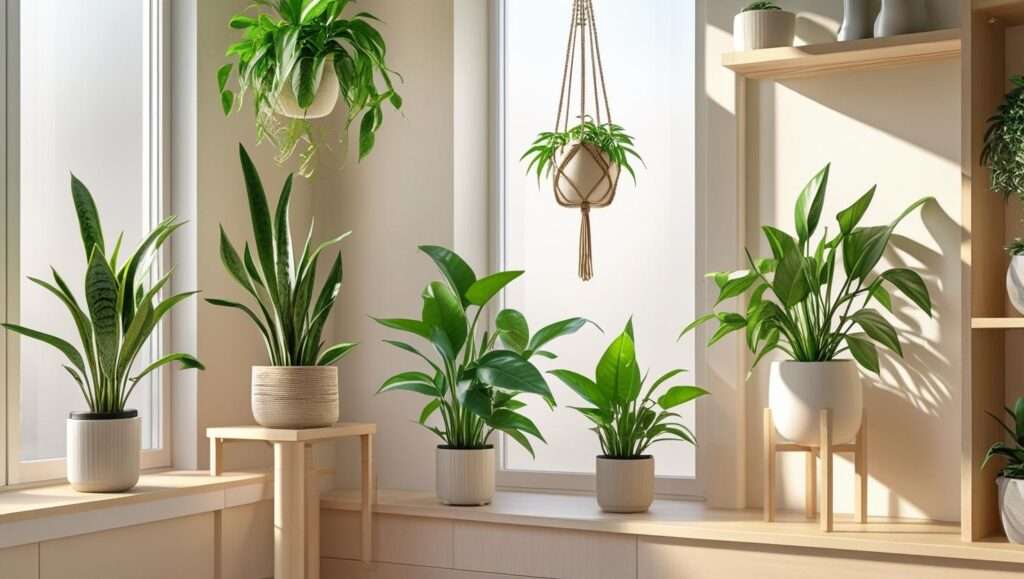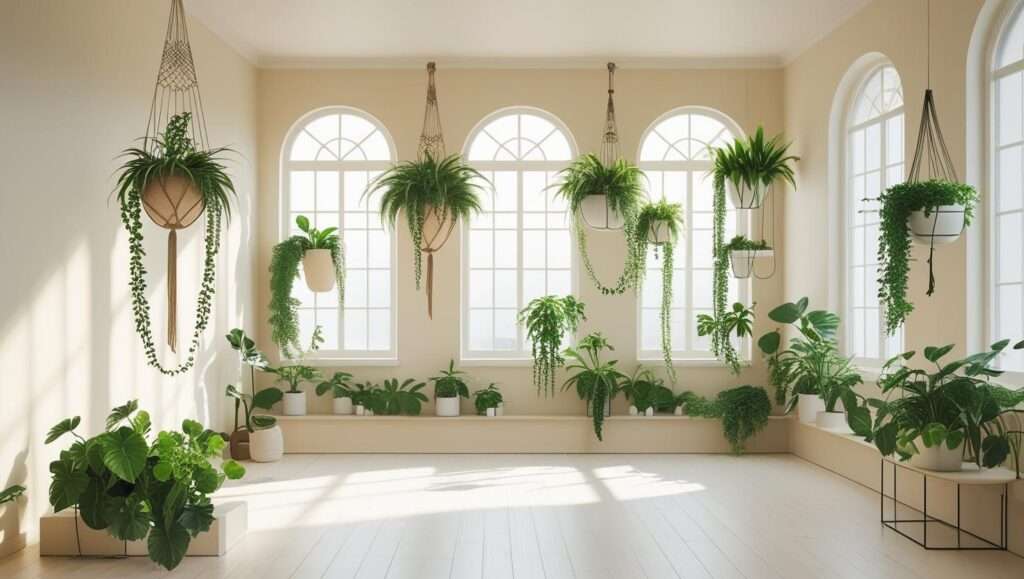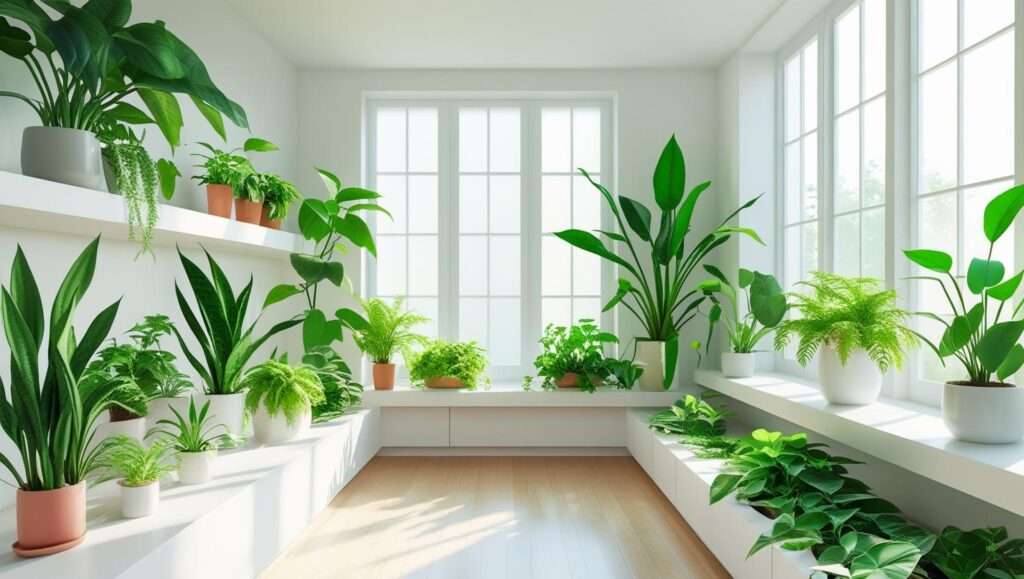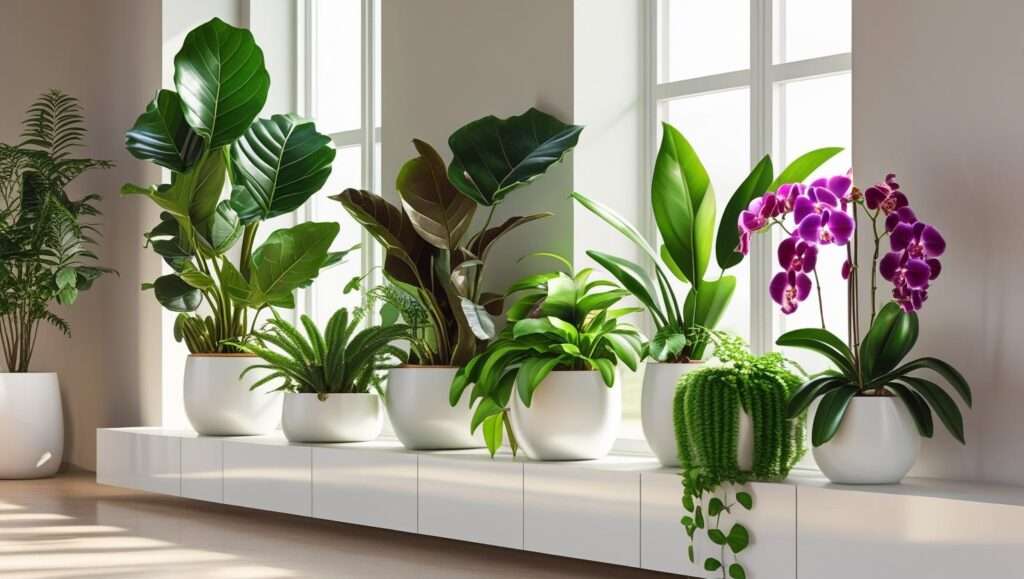Imagine stepping into your home and being greeted by bursts of vibrant blooms, transforming your space into a living, breathing oasis. Indoor flowering plants do more than just enhance your decor—they purify the air, lift your mood, and bring nature’s beauty indoors. Whether you’re a beginner or a seasoned gardener, choosing the right indoor flowering plants can make all the difference. This comprehensive guide, crafted by a horticulture expert with over a decade of experience, highlights the top 10 indoor flowering plants to brighten your home, complete with expert care tips and practical advice to keep them thriving year-round. From low-maintenance peace lilies to exotic orchids, we’ve got you covered.
Why Choose Indoor Flowering Plants?

Aesthetic and Emotional Benefits
Indoor flowering plants are a game-changer for home aesthetics. Their vibrant colors and delicate petals create a welcoming atmosphere, turning any room into a cozy retreat. A 2018 study from the Journal of Environmental Psychology found that indoor plants reduce stress and improve focus, making them perfect for busy households or workspaces. Whether it’s the soft white blooms of a peace lily or the bold reds of a hibiscus, these plants add warmth and personality to your space.
Health and Environmental Advantages
Beyond beauty, indoor flowering plants improve air quality. According to NASA’s Clean Air Study, plants like peace lilies and anthuriums remove toxins such as benzene and formaldehyde from the air. They also increase humidity, which is especially beneficial in dry climates or during winter months. Many of these plants are low-maintenance, making them ideal for those with limited time but a desire for greenery.
Versatility for All Skill Levels
Whether you’re new to gardening or a plant enthusiast, there’s an indoor flowering plant for you. From forgiving species like kalanchoe to more demanding ones like orchids, this guide curates options for every skill level and home environment. Let’s dive into the top 10 plants that will keep your home blooming year-round.
Top 10 Indoor Flowering Plants for Your Home
1. Peace Lily (Spathiphyllum)

Description: Known for its elegant white blooms and glossy green leaves, the peace lily is a classic choice for indoor spaces. It thrives in low to medium light, making it perfect for rooms with limited sunlight.
Care Tips:
- Watering: Keep soil consistently moist but not soggy. Water when the top inch feels dry.
- Light: Prefers low to indirect light; avoid direct sunlight to prevent leaf burn.
- Soil: Use well-draining potting mix, ideally with peat moss.
- Tip: Wipe leaves with a damp cloth to remove dust and enhance photosynthesis.
Why It’s Great: Peace lilies are beginner-friendly and excellent air purifiers, removing toxins like ammonia. Their compact size fits perfectly on tabletops or shelves.
2. African Violet (Saintpaulia)
Description: These compact plants boast clusters of purple, pink, or white flowers, blooming almost year-round with proper care. Their fuzzy leaves add texture to any space.
Care Tips:
- Watering: Water from the bottom to avoid leaf spots; keep soil moist but not waterlogged.
- Light: Bright, indirect light is ideal; east-facing windows work well.
- Soil: Use a light, well-draining African violet-specific mix.
- Tip: Rotate the pot weekly for even growth.
Why It’s Great: African violets are perfect for small spaces like apartments and offer long-lasting blooms with minimal effort.
3. Orchid (Phalaenopsis)
Description: Phalaenopsis orchids are prized for their exotic, long-lasting blooms in shades of white, pink, or purple. Their arching flower spikes add sophistication to any room.
Care Tips:
- Watering: Water every 7–10 days, allowing roots to dry slightly between waterings.
- Light: Bright, indirect light; avoid direct sun.
- Humidity: Prefers 50–70% humidity; mist occasionally or use a pebble tray.
- Tip: Repot every 1–2 years in orchid bark mix.
Why It’s Great: Orchids bring a touch of elegance and are widely available at nurseries and garden centers.
4. Christmas Cactus (Schlumbergera)
Description: This festive plant blooms in winter with vibrant pink, red, or white flowers, making it a seasonal favorite. Its segmented stems give it a unique look.
Care Tips:
- Watering: Water sparingly; allow soil to dry out slightly between waterings.
- Light: Bright, indirect light; avoid intense afternoon sun.
- Soil: Use a cactus or succulent mix for drainage.
- Tip: To encourage blooming, provide cooler temperatures (50–60°F) at night in fall.
Why It’s Great: Easy to propagate and perfect for adding holiday cheer, the Christmas cactus is a low-maintenance gem.
5. Anthurium (Flamingo Flower)
Description: With glossy, heart-shaped red or pink blooms, anthuriums add a tropical flair to indoor spaces. Their flowers can last for months with proper care.
Care Tips:
- Watering: Keep soil lightly moist; avoid overwatering.
- Light: Medium to bright indirect light.
- Humidity: Thrives in high humidity; mist regularly or use a humidifier.
- Tip: Clean leaves to maintain their glossy shine.
Why It’s Great: Anthuriums offer long-lasting blooms and a bold, exotic aesthetic.
6. Begonia (Begonia spp.)
Description: Begonias produce clusters of bright flowers in shades of red, pink, or white, with attractive foliage that complements their blooms.
Care Tips:
- Watering: Water when the top inch of soil feels dry; avoid soggy conditions.
- Light: Bright, indirect light; too much sun can scorch leaves.
- Soil: Use a well-draining, peat-based mix.
- Tip: Pinch back stems to encourage bushier growth.
Why It’s Great: Versatile for hanging baskets or pots, begonias are a colorful addition to any home.
7. Kalanchoe (Kalanchoe blossfeldiana)
Description: This succulent-like plant produces clusters of small, vibrant flowers in red, yellow, or pink, blooming for weeks with minimal care.
Care Tips:
- Watering: Water sparingly; allow soil to dry completely between waterings.
- Light: Bright light, including some direct sun.
- Soil: Cactus or succulent mix works best.
- Tip: Deadhead spent blooms to prolong flowering.
Why It’s Great: Kalanchoe’s drought tolerance makes it ideal for busy plant owners.
8. Cyclamen (Cyclamen persicum)
Description: Cyclamen’s delicate, upswept petals in pink, white, or red create a striking display, especially in cooler seasons.
Care Tips:
- Watering: Water from the bottom to keep foliage dry; avoid overwatering.
- Light: Bright, indirect light; thrives in cooler temperatures (50–65°F).
- Soil: Well-draining potting mix.
- Tip: Allow a dormancy period in summer by reducing water.
Why It’s Great: Its unique bloom shape and seasonal charm make cyclamen a standout.
9. Hibiscus (Hibiscus rosa-sinensis)
Description: Known for its large, tropical blooms in red, pink, or yellow, hibiscus brings bold energy to indoor spaces.
Care Tips:
- Watering: Keep soil consistently moist but not waterlogged.
- Light: Bright light, including some direct sun.
- Humidity: Prefers high humidity; mist leaves regularly.
- Tip: Prune regularly to maintain shape and encourage blooms.
Why It’s Great: Hibiscus makes a stunning statement piece for sunny rooms.
10. Geranium (Pelargonium)
Description: Geraniums produce clusters of red, pink, or white flowers, paired with fragrant, textured leaves.
Care Tips:
- Watering: Water when soil feels dry; avoid overwatering.
- Light: Full sun or bright light; south-facing windows are ideal.
- Soil: Well-draining potting mix.
- Tip: Deadhead regularly to promote continuous blooming.
How to Choose the Right Indoor Flowering Plant for Your Space

Assessing Your Environment
Selecting the perfect indoor flowering plant starts with understanding your home’s conditions. Light, humidity, and space are key factors. Begin by observing your rooms: Do you have bright, south-facing windows, or are you working with dim corners? Use a light meter app or simply note how many hours of sunlight each area receives. For low-light spaces, opt for peace lilies or African violets. For sunny spots, geraniums or hibiscus thrive. Humidity matters too—bathrooms or kitchens with higher moisture suit anthuriums and orchids, while dry rooms are better for kalanchoe. Space constraints? Compact plants like African violets or Christmas cacti fit small apartments, while larger hibiscus plants need room to shine.
Checklist for Matching Plants to Your Home:
- Light: Low (peace lily, cyclamen), medium (anthurium, begonia), or bright (hibiscus, geranium).
- Humidity: High (orchid, anthurium) or low (kalanchoe, Christmas cactus).
- Space: Small (African violet, cyclamen) or large (hibiscus, begonia).
Matching Plants to Your Lifestyle
Your schedule and gardening experience should guide your choice. If you’re busy or new to plant care, start with low-maintenance options like peace lilies or kalanchoe, which forgive occasional neglect. Enthusiasts with time for nurturing can tackle orchids or hibiscus, which reward dedication with stunning blooms. Consider how often you’re home to water or adjust plant positions—kalanchoe and Christmas cacti are drought-tolerant, while anthuriums and African violets need consistent care. Families with pets should choose non-toxic plants like African violets or begonias, as some (like peace lilies) can be harmful if ingested.
Budget and Availability
Indoor flowering plants are accessible and budget-friendly. Local nurseries, garden centers, or online retailers like The Sill or Bloomscape offer healthy options. For cost savings, propagate plants like Christmas cacti or begonias from cuttings—share with friends to build your collection. Look for sales at big-box stores, but inspect plants for pests or stress before buying. Starter plants are often cheaper than mature ones, and with proper care, they’ll grow into showstoppers. Investing in quality pots and soil upfront ensures long-term success.
Expert Care Tips for Thriving Indoor Flowering Plants
Watering Best Practices
Watering is the most common stumbling block for indoor gardeners. Overwatering leads to root rot, while underwatering causes wilting. A general rule: water when the top inch of soil feels dry, using pots with drainage holes to prevent soggy roots. For peace lilies, keep soil consistently moist but not waterlogged. Orchids need infrequent watering—every 7–10 days—while kalanchoe thrives with minimal water. Use room-temperature water to avoid shocking roots, and for African violets, water from the bottom to protect their delicate leaves. A moisture meter can help beginners gauge soil dampness accurately.
Light and Placement

Light is critical for blooming. Most indoor flowering plants prefer bright, indirect light—think east or west-facing windows. South-facing windows work for sun-lovers like geraniums or hibiscus, but use sheer curtains to diffuse intense rays. Low-light areas suit peace lilies and cyclamen, though blooms may be less frequent. Rotate plants every 1–2 weeks for even growth, and consider LED grow lights for dark spaces (opt for 5000–6500K bulbs for best results). Keep plants away from drafty windows or heating vents to avoid stress.
Soil and Fertilization
The right soil mix ensures healthy roots and vibrant blooms. Most indoor flowering plants need well-draining soil—mix potting soil with perlite or sand for begonias and geraniums. Orchids require a bark-based mix, while African violets thrive in peat-based blends. Fertilize every 4–6 weeks during the growing season (spring and summer) with a balanced, water-soluble fertilizer (10-10-10 or 20-20-20). For orchids, use a specialized orchid fertilizer. In fall and winter, reduce feeding as most plants enter a slower growth phase. Organic options like fish emulsion or compost tea are eco-friendly alternatives.
Pest and Disease Management
Common pests like aphids, spider mites, and mealybugs can plague indoor plants. Inspect new plants and quarantine them for 2–3 weeks to prevent infestations. If pests appear, wipe leaves with a mild soap-and-water solution or use neem oil for organic control. Root rot, often caused by overwatering, is a frequent issue—ensure proper drainage and avoid letting pots sit in water. Promote airflow by spacing plants apart and cleaning leaves regularly. For fungal issues like powdery mildew (common on begonias), increase ventilation and reduce humidity.
Pruning and Maintenance
Pruning encourages fuller growth and prolonged blooming. Deadhead spent flowers on geraniums, kalanchoe, and begonias to redirect energy to new blooms. For hibiscus, trim leggy stems in spring to maintain shape. Use clean, sharp scissors to avoid spreading disease. Cyclamen may enter dormancy in summer—reduce watering and store in a cool, dark place until fall. Regularly remove yellowing leaves and dust foliage to boost photosynthesis. Repot every 1–2 years to refresh soil and prevent root-bound plants.
Common Mistakes to Avoid with Indoor Flowering Plants
- Overwatering: The top mistake. Always check soil moisture before watering and ensure proper drainage.
- Solution: Use pots with drainage holes and a saucer to catch excess water.
- Wrong Light Exposure: Too much sun burns leaves; too little prevents blooming.
- Solution: Match plants to your home’s light conditions using the checklist above.
- Neglecting Humidity: Low humidity stresses tropical plants like orchids and anthuriums.
- Solution: Use a humidifier or pebble tray, especially in winter.
- Ignoring Pests: Small infestations can escalate quickly.
- Solution: Inspect plants weekly and treat pests promptly with organic methods.
- Skipping Maintenance: Deadheading and pruning are essential for continuous blooms.
- Solution: Set a monthly care schedule to stay on top of tasks.
Real-World Example: “My orchid stopped blooming—what went wrong?” Likely causes include insufficient light, overwatering, or lack of fertilizer. Move it to a brighter spot, water sparingly, and fertilize monthly during the growing season to encourage reblooming.
Enhancing Your Home with Indoor Flowering Plants
Creative Display Ideas
Indoor flowering plants shine when displayed thoughtfully. Group peace lilies and African violets on a tiered shelf for a lush look. Hang Christmas cacti or begonias in macramé planters for a bohemian vibe. For modern decor, place a single anthurium in a sleek ceramic pot as a focal point. Terrariums work well for small cyclamen or African violets, creating a mini garden effect. Mix textures by pairing flowering plants with leafy ones like pothos or ferns. Use decorative trays or stands to elevate plants in minimalist spaces.
Seasonal Rotations
Keep your home blooming year-round by rotating plants seasonally. In winter, showcase cyclamen and Christmas cacti for festive charm. In summer, geraniums and begonias thrive in brighter light. Transition plants gradually—move cyclamen to a cooler spot for dormancy in summer, and bring hibiscus indoors before fall frosts. Refresh displays with seasonal accents like holiday-themed pots or natural elements (e.g., pinecones in winter).
Combining with Non-Flowering Plants
For visual contrast, pair flowering plants with foliage-heavy companions. Ferns complement the delicate blooms of cyclamen, while pothos adds trailing greenery to hibiscus displays. Snake plants or ZZ plants provide structural balance for low-maintenance setups. Create a jungle-like corner by mixing peace lilies, anthuriums, and monstera for a tropical feel. Ensure all plants in a group have similar light and water needs to simplify care.
Expert Insights: Q&A with a Horticulture Specialist
Q: How do I revive a drooping peace lily?
A: Drooping often signals underwatering or low humidity. Water thoroughly, ensuring excess drains out, and place the plant in a brighter, indirect light spot. Mist leaves or use a pebble tray to boost humidity. If the soil is waterlogged, repot with fresh mix to prevent root rot.
Q: Why aren’t my African violets blooming?
A: Insufficient light or irregular watering could be the cause. Move them to an east-facing window with bright, indirect light, and water from the bottom when the soil feels dry. Fertilize monthly with a high-phosphorus formula (e.g., 15-30-15) to encourage blooms.
Q: Can I grow hibiscus indoors year-round?
A: Yes, with bright light and high humidity. Place near a south-facing window, mist regularly, and prune in spring to maintain size. Ensure consistent watering and fertilize during the growing season for vibrant blooms.
Source: Insights align with recommendations from the Royal Horticultural Society and university extension programs.
FAQs About Indoor Flowering Plants
Q: Which indoor flowering plants are best for low light?
A: Peace lilies and cyclamen thrive in low to medium light, making them ideal for dimly lit rooms. Ensure proper watering to maintain blooms.
Q: How often should I fertilize my flowering plants?
A: Fertilize every 4–6 weeks during spring and summer with a balanced fertilizer. Reduce or stop in fall and winter, except for actively blooming plants like African violets.
Q: Can indoor flowering plants survive in small apartments?
A: Absolutely! Compact plants like African violets, Christmas cacti, and kalanchoe are perfect for small spaces. Use vertical shelves or hanging planters to maximize room.
Q: What’s the easiest flowering plant for beginners?
A: Peace lilies and kalanchoe are forgiving and low-maintenance, ideal for those new to indoor gardening.
Indoor flowering plants bring color, life, and joy to any home, from cozy apartments to spacious houses. Whether you choose the elegant peace lily, vibrant hibiscus, or compact African violet, these plants offer aesthetic and health benefits with the right care. Start with one or two from our curated list, follow our expert tips, and watch your space transform into a blooming sanctuary. Share your favorite plant in the comments or explore our related guides on indoor gardening for more inspiration. Your journey to a greener, more vibrant home starts here!

